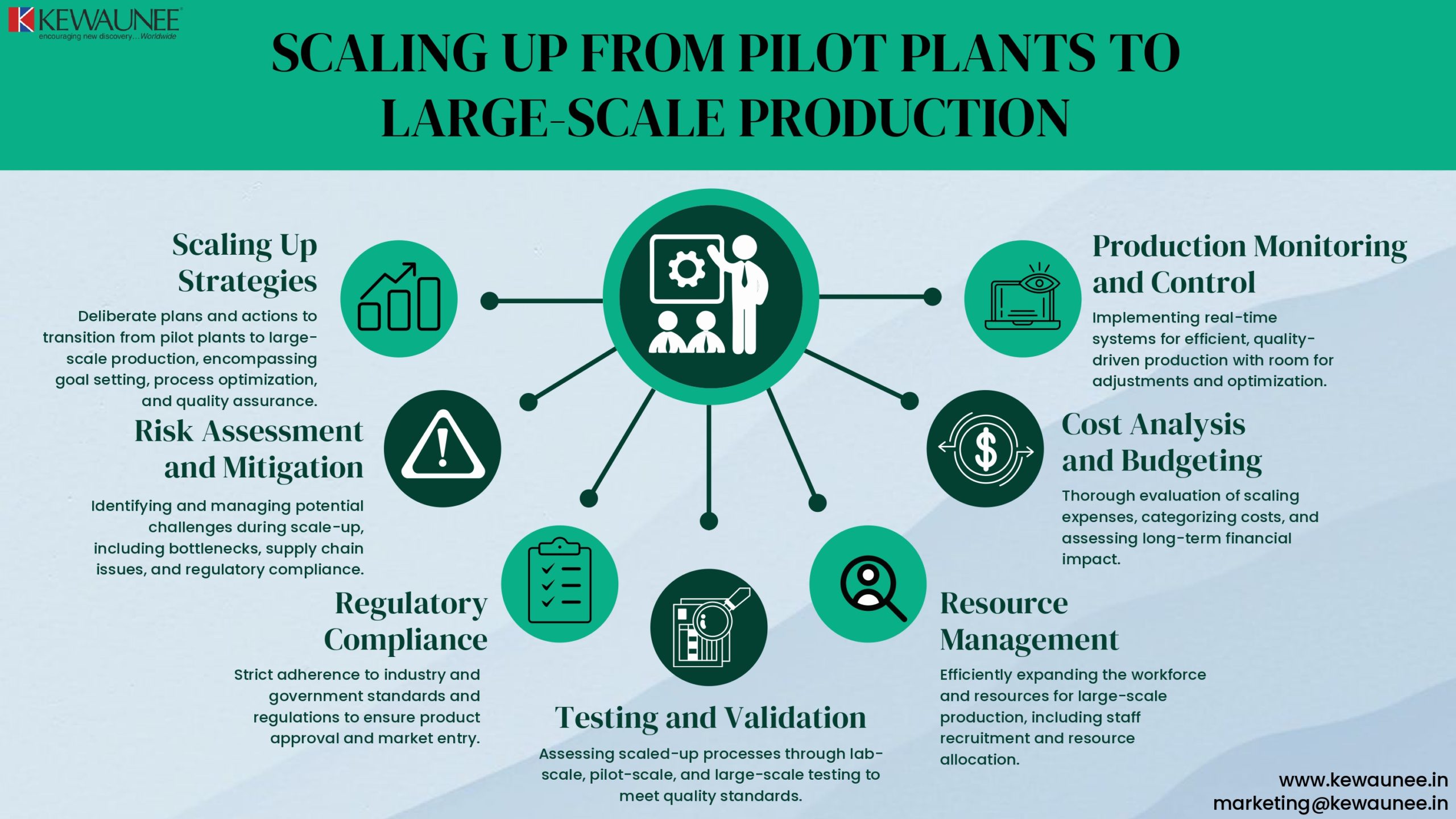Scaling Up From Pilot Plants to Large-Scale Production
In the world of manufacturing, transitioning from small-scale pilot plants to large-scale production is a crucial step. It’s a journey filled with challenges, but with the right strategies and mindset, businesses can scale up with confidence.
This blog explores the process of scaling up and the key considerations involved.
1. Introduction
Scaling up from a pilot plant to large-scale production is a significant milestone for any manufacturing company. It involves increasing the capacity to meet market demand while maintaining product quality and consistency.
The success of this transition can significantly impact a company’s growth and profitability.
2. Understanding the Pilot Phase
2.1. The Role of Pilot Plants
Pilot plants serve as a testing ground for new processes or products. They allow manufacturers to validate concepts, optimize processes, and gather valuable data. These smaller-scale facilities play a crucial role in the development and improvement of manufacturing processes.
2.2. Challenges in the Pilot Phase
Pilot plants often operate under ideal conditions, which may not be representative of large-scale production. Challenges include scale differences, equipment variations, and limited data. These challenges highlight the need for a thoughtful approach when transitioning to large-scale production.
3. Scaling Up Strategies
3.1. Detailed Planning
Thorough planning is essential when scaling up. It involves identifying the scale-up goals, defining success criteria, and setting a clear roadmap. Planning should encompass not only technical aspects but also financial and resource considerations.
3.2. Equipment and Infrastructure
Selecting the right equipment and ensuring that the infrastructure can handle the increased scale is critical. This may involve upgrading or expanding facilities. Ensuring that equipment can operate at a larger scale while maintaining efficiency is crucial.
3.3. Process Optimization
The manufacturing process may need adjustments to accommodate the larger scale. This includes optimizing batch sizes, cycle times, and efficiency. Process changes must maintain or improve product quality while achieving economies of scale.
3.4. Quality Assurance
Maintaining product quality is non-negotiable during scaling up. Quality control procedures must be adapted to the larger scale. This includes quality checkpoints, testing protocols, and validation procedures to ensure product consistency.
4. Risk Assessment and Mitigation
4.1. Identifying Risks
It’s crucial to identify potential risks associated with scaling up. These could include production bottlenecks, supply chain issues, and regulatory compliance challenges. A comprehensive risk assessment should consider both internal and external factors.
4.2. Risk Mitigation Plans
Developing risk mitigation plans is a proactive approach to address challenges as they arise. Contingency plans and monitoring systems can help manage risks effectively. Regular review and adjustment of risk mitigation plans are essential.
5. Regulatory Compliance
Compliance with regulations becomes even more critical at a larger scale. Manufacturers must ensure that their processes and products meet industry and government standards. Regulatory compliance is integral to product safety, market access, and brand reputation.
6. Testing and Validation
Thorough testing and validation are necessary to confirm that the scaled-up processes and products meet the desired specifications and quality standards. This is a critical step in ensuring that the larger-scale production maintains product integrity.
6.1. Testing Phases
This may include various testing phases, from lab-scale testing to pilot-scale testing and, finally, large-scale production testing. Each phase serves to verify the quality and performance of the product.
6.2. Validation Protocols
Manufacturers must establish validation protocols to ensure that products meet quality, safety, and efficacy standards. Validation includes documentation and evidence of compliance with predefined criteria.
7. Resource Management
Scaling up often requires a more extensive workforce and resources. Managing these effectively is key to success.
7.1. Workforce Expansion
Hiring and training additional staff is often necessary. This includes operators, quality control personnel, and support staff. Effective onboarding and training programs ensure that the workforce can adapt to the larger scale.
7.2. Resource Allocation
Effective resource allocation ensures that equipment, raw materials, and space are optimally utilized. Efficient resource management helps prevent bottlenecks and inefficiencies.
8. Cost Analysis and Budgeting
Analyze the costs associated with scaling up and create a budget that considers all expenses, from equipment purchase to increased staffing. Accurate cost analysis and budgeting are essential for financial stability during the transition.
8.1. Budget Categories
Budgets typically include categories for capital expenses, operational costs, and unexpected contingencies. Detailed budgeting allows for better financial planning and risk management.
8.2. Return on Investment (ROI)
Evaluating the ROI of scaling up is crucial. Companies must understand the long-term financial impact of their investment. ROI calculations should consider not only immediate returns but also the sustainable growth potential.
9. Production Monitoring and Control
Implement systems for real-time monitoring and control to ensure that the production process remains efficient and quality-driven. Monitoring and control systems enable proactive adjustments and maintain product consistency.
9.1. Real-time Data
Advanced data analytics and monitoring systems provide real-time information on production performance. This data helps identify trends, deviations, and areas for improvement.
9.2. Adjustments and Optimization
Regularly reviewing production data allows for adjustments and optimizations to enhance efficiency. Continuous improvement is essential to maintain high-quality output.
Summary
Scaling up from pilot plants to large-scale production is a journey filled with challenges and opportunities. It requires careful planning, risk assessment, and a commitment to quality and compliance. With the right strategies and mindset, businesses can scale up with confidence, meeting market demand and achieving growth.
Successful scaling up not only leads to increased production but also validates the viability of new products and processes. It’s a testament to a company’s adaptability and commitment to excellence, positioning them for success in a competitive manufacturing landscape.
Comments are closed.











